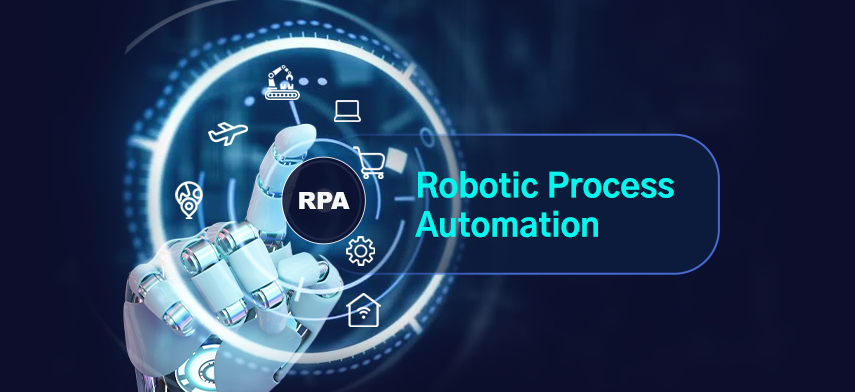Our role as futurists is to predict and analyze future technological and commercial developments. Technology is the lifeblood of business these days. Today, we’ll show you the top seven technology trends in 2023. Technology continues to rule the world; it has made millions of firms prosper. Uncovering the Leading 7 Technological Trends of 2023: Ranging from Artificial Intelligence to 5D Technology. The use of new technology daily has increased the way each business works and makes people opt for something that gives timely evolutions based on the technology. With many new technology trends emerging daily, companies need to stay updated with their technology needs to meet customer demands effectively. Technology has also made its way into the future, where people have started to live using avatars. Here are the top 7 technology trends in 2023:
1. Artificial Intelligence:
Even though artificial intelligence, or AI, has generated a lot of buzz over the past 10 years, it is still one of the newest technological trends because its effects on how we live, work, and play are just beginning to be felt. Exploring the Top 7 Technology Trends of 2023: AI is the most important technology. The largest companies already use artificial intelligence technology to predict demand and provide users with relevant information. Its evolution began about a decade ago, and there are arguments about whether AI can replace humans. AI is well-known for its superiority in many fields, including ride-sharing apps, smartphone personal assistance, image and speech recognition, navigation apps, and more. Elon Musk has said he fears artificial intelligence could one day outsmart humans and endanger us, citing AI as the biggest threat to civilization. The AI market will grow to a $190 billion industry by 2025, with global spending on cognitive and AI systems reaching over $57 billion in 2023.

2. Robotic Process Automation (RPA):
Robotic process automation is a technology that automates AI and machine learning jobs. RPA, like AI and machine learning, is rapidly improving technology that automates many jobs in various fields. According to McKinsey, machines can only perform about 5% of jobs, but they can perform about 60% of jobs in some capacity. RPA automates corporate activities such as data collection and analysis, customer support, and other tasks using a variety of software and applications. RPA creates numerous new career opportunities for programmers, project managers, business analysts, and consultants. It gives you access to well-paying jobs at leading organizations with a good learning curve. RPA is growing in popularity because it can reduce costs, streamline processing, and drive better customer experiences. Another attraction of RPA software is that business units can implement it without having to learn new tools, ask IT teams for support, or change an organization’s underlying IT infrastructure.

3. 3D Printing:
The use of 3D printing to create prototypes is a significant trend in innovation and technology. The impact of this has been felt in the industrial and biomedical fields. 3D printing is an industry promising everything from cheap house building to affordable, rugged armor. But one of the most interesting uses of the technology is the building of 3D-printed bones. Osoform specializes in medical 3D printing, creating patient-specific replacements of different bones from tricalcium phosphate, a material with similar properties to human bones. Therefore, 3D printing is another innovation that will endure. Getting these 3D-printed bones is surprisingly easy. A hospital can perform an MRI, which is then sent to Osoform to create a 3D model of the patient-specific implant needed. The surgeon accepts the design, and once it is printed, it can be used in surgery.

4. Blockchain:
A blockchain is a secure place where you can securely store data in any form. This super-secure method of storing, authenticating, and protecting data could revolutionize many aspects of business, particularly when it comes to facilitating trusted transactions. It is similar to the funds in a bank account, where the funds never get lost or stolen when placed inside the blockchain. Information stored in such a chain cannot be altered or deleted. Blockchain technology is already widely used in many businesses, from supply chain management to electoral processes. This will continue to help improve the safety and transparency of numerous procedures. Blocks have certain storage capacities, and when filled, they are closed and linked to the previously served block, forming a chain of data known as the blockchain. Blockchains are also consensus-driven, meaning no one organizes and controls the data. It eliminates the need for a reliable third party to supervise or verify transactions.

5. Internet of Things (IoT):
In 1982, the concept of a networked smart device arose with a modified vending machine at Carnegie Mellon University, marking the first internet-connected appliance. This marks the inception of the Internet of Things (IoT). Billions of devices are now connected, enabling objects like toothbrushes, cars, and more to gather data and respond smartly. Sensor advancements and data study drive this expansion across sectors from manufacturing to healthcare. Despite initial challenges, like bulky chips, progress has led to smarter, smaller devices, including low-power RFID tags. IoT envisions a global, self-connected system of devices exchanging information, with over 50 billion devices projected by 2030, with a global investment exceeding $1.1 trillion. IoT, in its infancy, is set to experience rapid growth.
.

6. Rise of Super Apps:
A super app combines the features of an app, a platform, and an ecosystem into one application. It not only has its own set of functionalities, but it also provides a platform for third parties to develop and publish their own mini-apps on. Super apps are becoming more widespread, even though they are not as general as traditional mobile applications. Some prominent examples include Tencent’s WeChat app, which initially started as a messaging app but evolved into an ecosystem of services that includes taxi rides, payments, hotel reservations, games, medical consultations, and more. Super apps consolidate and replace multiple apps for customer or employee use.

7. 5D Technology:
This technology will enable your smartphone to get faster, stronger signals with much lower latency than ever. 5D technology has already been deployed in many countries worldwide, where mobile networks are much faster than those on 4D technology. Beyond speed improvement, the technology

All above information read Relevant knowledge: https://www.uipath.com/rpa/robotic-process-automation#:~:text=Robotic%20process%20automation%20(RPA)%20is,with%20digital%20systems%20and%20software.
https://en.wikipedia.org/wiki/3D_printing
https://www.mainepointe.com/blog/five-ways-3d-printing-will-impact-the-global-supply-chain
Explore our articles brimming with the latest insights and updates on science and technology.https://scitechupdate.com/index.php/ai-demonstrated-95-accuracy-in-listening-typing-and-data-processing/
https://scitechupdate.com/index.php/energy-storage-from-waste-materials/


Pingback: The Martian Alien Search with 239 Million-Year-Old Fossils